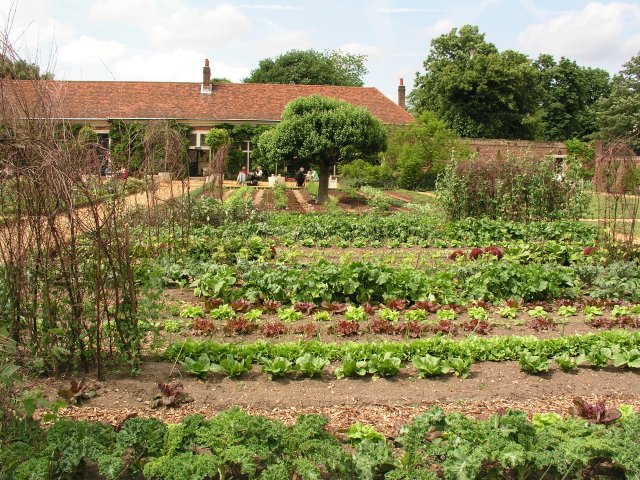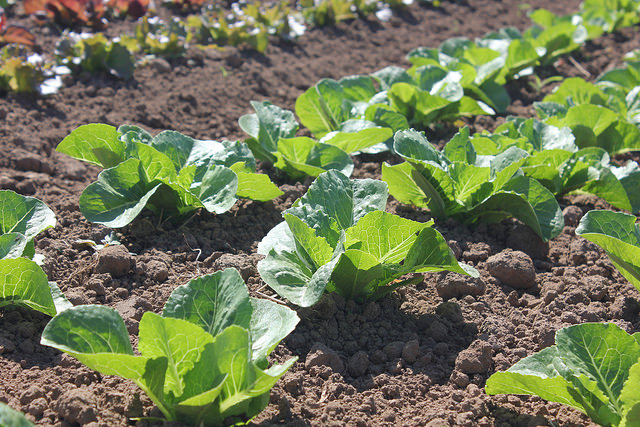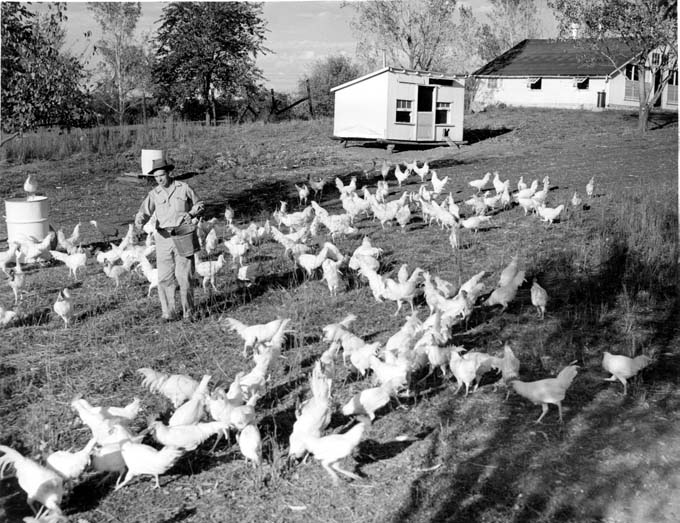 (Picture source)
(Picture source)
February is a great time to garden—in your mind and on paper.
When most parts of the US are just beginning to thaw out from winter, gardeners are already envisioning plants growing and producing in the warmth of summer. Some gardeners succumb to the lure of temporary warm spell and start their plants early only to have Jack Frost nip them back. Don’t gamble—use this time instead for planning out the next garden. There is a lot to do before spring when you will be busy preparing the ground, setting up the watering systems and sowing seeds. February and March are perfect for reading up about plants, evaluating last year’s garden, and learning how to combat pests and diseases. It is also time to take stock of the seeds you saved from last year and order or buy new ones.
What to Try First
Be careful when perusing seed and plant catalogs; glossy pictures of beautiful mature plants and ripe produce are so tempting you can easily end up buying more seeds than you have space or energy for. From a preparedness perspective, you should start out learning to cultivate plants that are easy to grow and produce high-volumes of food, such as: zucchini, potatoes, beets, carrots, squash, and beans. Most gardeners also want to grow a few garden favorites like tomatoes, cucumbers, corn, peppers and pump
kins. After you have a little gardening experience you should also grow early-to-table crops like peas, lettuce, radishes, chard and kale.
Start a Garden Journal
A good garden plan should be written down each year in a notebook. These garden journals document how the garden was prepared (raised beds, furrows, square plots, etc), where plants grew, and a host of other information. You can document soil pH from tests, watering methods, fertilizers, mulching strategies, pests, diseases and remedies. The more information you keep track of, the easier it will be in a few years to know what went wrong and what worked well. Experience is very important in gardening, but there are so many factors it can be hard to remember where a plant grew well and where it fared poorly. By tracking the plant’s location, the general weather that year and other inputs, you can learn why some plants failed and hopefully how to remedy the problem to get a good crop when it really matters.
Crop Rotation
Crop rotation is an important part of your garden plan. The idea is that since plants use and give back different nutrients to the ground, it best to move them around each year to keep the soil healthy. However, crop rotation is a very inexact science, depending greatly on your gardening style and plants. In the first place, perennials like asparagus, rhubarb, and most herbs regrow in the same place year after year. Some plants that reseed themselves easily like turnips, lettuce and some onions are also best left to thrive in their own spot.
Crop rotation is most important for crops that are grown in large isolated groups—crops like corn and potatoes. Corn uses large amounts of nitrogen so it should follow peas, beans or other legumes that put nitrogen back in the soil. Chicken manure is also high in nitrogen, as is hay or shavings from animal stalls.
Potatoes are said to produce better if planted after corn. This important crop also has to be rotated to a new place each year to reduce the chances of disease building up in the soil. Try to give the soil three or four years between potato plantings to discourage any diseases. Tomatoes are in the same family as potatoes and may attract potato blight so don’t plant them in succession. Some gardeners keep tomatoes in the same spot year after year without problems and others claim they do even better if tomatoes are grown in the asparagus plot.
Farmers group their plants into similar families and keep members of the same family together in the rotation or separated by a few years. Here are the biggest groups: Nightshades: tomatoes, potatoes, peppers, eggplant; Brassicas: cabbage, broccoli, cauliflower, kale, collards and turnips; Legumes: peas, beans, lentils, and clover; Squash: squash, pumpkins, cucumbers, melons, and gourds; Carrots: carrots, turnips, fennel, celeriac. Goosefoot: beets, swiss chard, and spinach. Some plants, like onions and carrots, can be planted anywhere and are generally beneficial.
Here are a few more tips: The cabbage family does well following beans. Squash spreads out and smothers weeds. Beets and carrots pull a lot from the soil and are best following squash. Eliot Coleman, an organic farmer recommends rotating in this order: (1) Tomatoes, (2) peas, (3) cabbage, (4) sweet corn, (5) potatoes, (6) squash, (7) root crops, (8) beans.
The benefits of rotating crops has long been established, but the exact method varies. You may not want a plot of peas as big as your sweet corn was. Or your garden may be so small moving the corn around would shade other plants. You will have to find ways to work around the problems. Perhaps you may have to rotate by growing some crops one year and not another. Shade tolerant crops include beets, spinach, carrots, and summer lettuce. Some gardeners have success without rotating by growing many diverse plants together with companion plants that help revitalize the soil at the same time. You may also be able to revitalize most nutrients with good compost and digested manure or other natural fertilizers, but you have to watch out for diseases and pests.
As you can see, there are plenty of ways to grow crops, but to keep your soil and garden healthy year after year you should make a plan that will work for the next several years. Your garden journal is an important tool in this planning, and can really help you maximize your space to grow more abundantly. A good plan will save you time knowing where (and when) to plant things during the hectic spring. Your plan is also a valuable reference for identifying that new squash or tomato variety in the dense overgrown jungle at the end of the summer. Don’t forget to add notes at the end of the year about which varieties grew well for you, which preserved well, and, above all, which tasted good. [END]

 **
**



